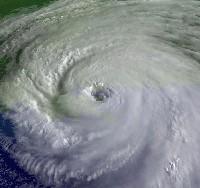I'm just askin'
How do 200,000 people evacuate from Wilkes-Barre, Pennsylvania without camera images of highways crammed with bumper-to-bumper traffic?
And "the Susquehanna levees stand at 41 feet"?!!!
Is there something we can learn from this, or am I over-simplifying the facts?
Tags: Hurricane Katrina | Katrina | New Orleans | Louisiana | We Are Not OK | Wilkes-Barre







6 Comments:
On the first question it might be simplifying depending on their geography. After all we're pretty water-locked around here so getting the millions evacuated from here tends to be a pretty big deal. That we've gotten better at it at all is something of a miracle, IMHO. But I'm not familiar with that area so it's hard to say.
On the second question... In a way we do have that protection, but only on the river levees which were engineered to a different standard than the system meant for hurrican protection. Of course whether or not they should have been engineered to such a lower standard is a whole other story and that is where I think your second question really isn't oversimplifying the situation too much. ;)
Abandon Wilkes-Barre!!!!!
Wilkes barre is set in the Wyoming Valley, with half of the residents on either side of the river over a 10 mile stretch north south. Those who live west tend to go west and those east go east. Additionally, they had 9 hours to evacuate.
There are many routes out of the valley.
The one thing that DID surprise me after Katrina, however, is that they did in-shelter at some area high schools. I am not sure that I would want to stay in the flood plain.
I understand that officials were concerned about the levees and floodgates holding, which is why they evacuated. Although it was 35 years ago, this area sustained a major flood-- so people knew to get out.
Also, a rising river is way different than a 20 foot wave of storm surge.
I'm wondering if Wilkes-Barre has a large population living below the poverty line without personal transportation.
They might have enforced passing on the shoulder laws in Pa. I've been afraid to post about it, thinking it would sound like just another overblown gripe, but I'm serious. The way I went, people apparently got to be afraid to pass once it got dark (or all the shoulder passers were gone) and traffic started moving. My sister says that, the way she sent went, once she got to Alabama (on I-10, people were evacuating), traffic started moving. All she could figure was that once she got to Alabama she saw them enforcing that law. If you think about it, every time the shoulder runs out and they have to cut in, it has a major ripple effect. I know the police have more important things to worry about during an emergency, but if it could help traffic move and potentially prevent a major road rage incident...
My joke suggestion, in an otherwise serious post, was going to be to preposition automobile immobilizers. With the construction crews adding to the potential problems, they will need to be proactive--much as I hate that word.
Yes Mr. Clio, why rebuild Wilkes-Barre?
Just kidding Betsey. I think you and Lenny make good points about the geography of the area offering more outlets.
Interesting point about shoulder drivers David. I've never heard that one before, but it certainly makes sense. I can't stand people who drive like that. If everyone did ...
You're on my wavelength sophmom. I suspect the independent transportation, knowledge of travel destinations, and income had a lot more to do with it.
Post a Comment
<< Home